Junjian Li
Adversarial RAW: Image-Scaling Attack Against Imaging Pipeline
Jun 02, 2022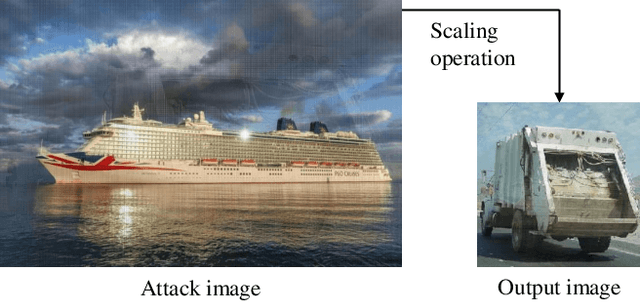
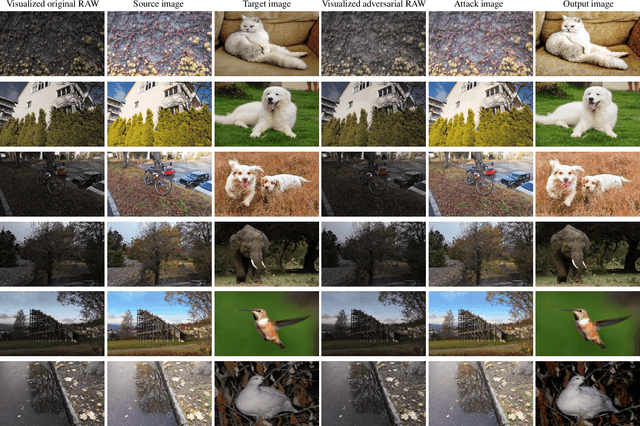
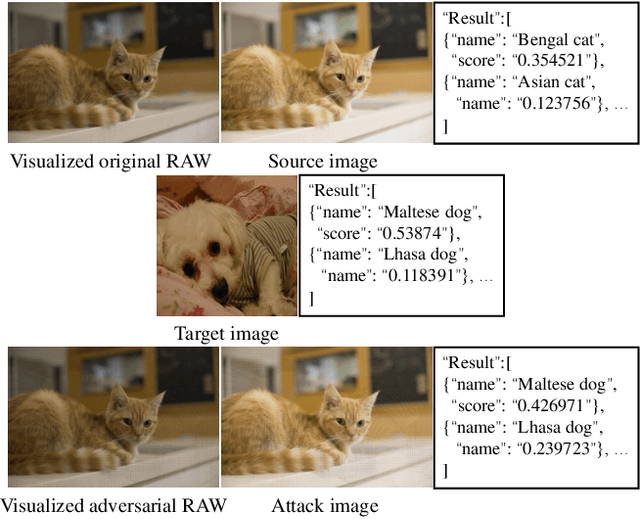
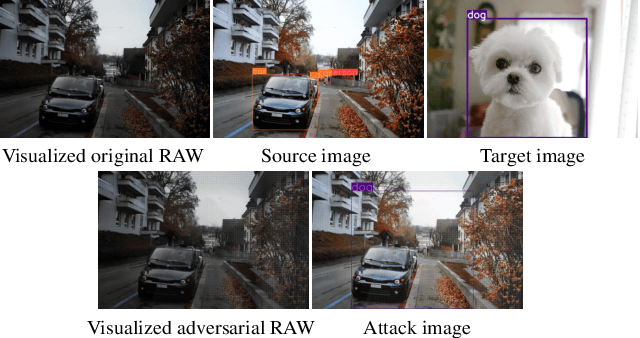
Abstract:Deep learning technologies have become the backbone for the development of computer vision. With further explorations, deep neural networks have been found vulnerable to well-designed adversarial attacks. Most of the vision devices are equipped with image signal processing (ISP) pipeline to implement RAW-to-RGB transformations and embedded into data preprocessing module for efficient image processing. Actually, ISP pipeline can introduce adversarial behaviors to post-capture images while data preprocessing may destroy attack patterns. However, none of the existing adversarial attacks takes into account the impacts of both ISP pipeline and data preprocessing. In this paper, we develop an image-scaling attack targeting on ISP pipeline, where the crafted adversarial RAW can be transformed into attack image that presents entirely different appearance once being scaled to a specific-size image. We first consider the gradient-available ISP pipeline, i.e., the gradient information can be directly used in the generation process of adversarial RAW to launch the attack. To make the adversarial attack more applicable, we further consider the gradient-unavailable ISP pipeline, in which a proxy model that well learns the RAW-to-RGB transformations is proposed as the gradient oracles. Extensive experiments show that the proposed adversarial attacks can craft adversarial RAW data against the target ISP pipelines with high attack rates.
Edge Data Based Trailer Inception Probabilistic Matrix Factorization for Context-Aware Movie Recommendation
Feb 16, 2022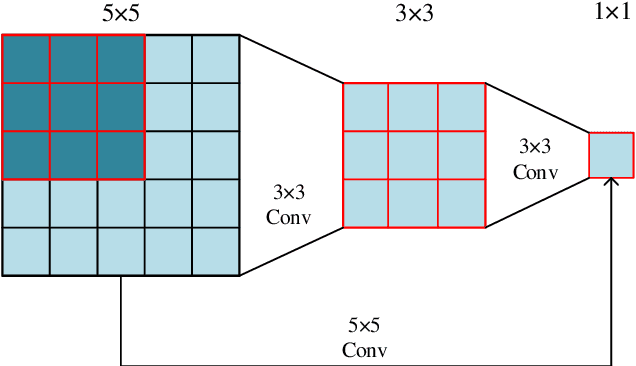
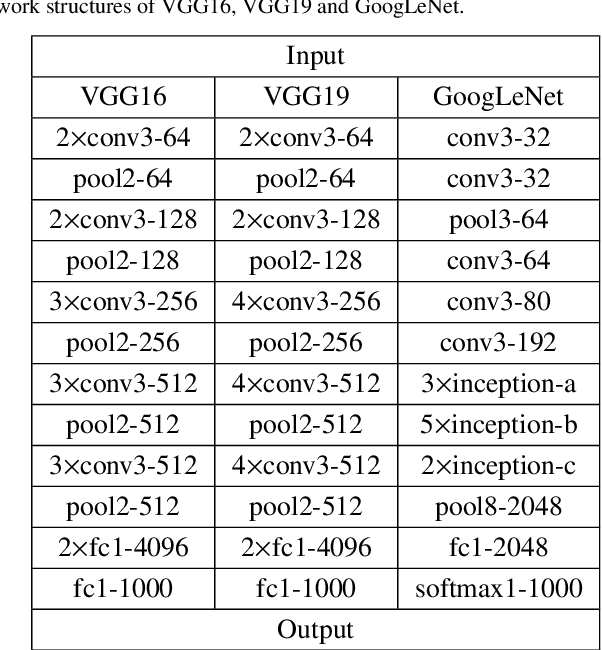
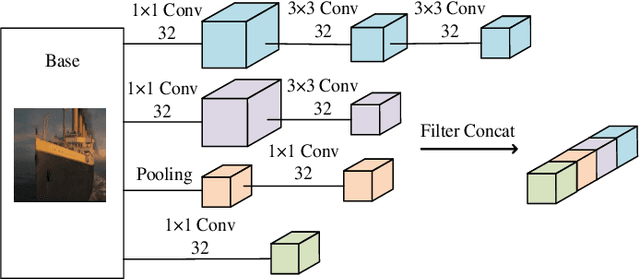
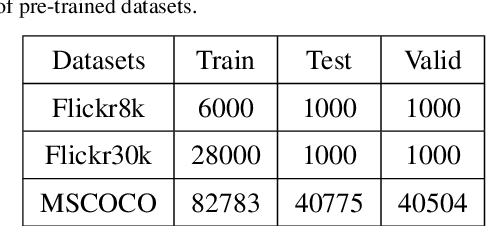
Abstract:The rapid growth of edge data generated by mobile devices and applications deployed at the edge of the network has exacerbated the problem of information overload. As an effective way to alleviate information overload, recommender system can improve the quality of various services by adding application data generated by users on edge devices, such as visual and textual information, on the basis of sparse rating data. The visual information in the movie trailer is a significant part of the movie recommender system. However, due to the complexity of visual information extraction, data sparsity cannot be remarkably alleviated by merely using the rough visual features to improve the rating prediction accuracy. Fortunately, the convolutional neural network can be used to extract the visual features precisely. Therefore, the end-to-end neural image caption (NIC) model can be utilized to obtain the textual information describing the visual features of movie trailers. This paper proposes a trailer inception probabilistic matrix factorization model called Ti-PMF, which combines NIC, recurrent convolutional neural network, and probabilistic matrix factorization models as the rating prediction model. We implement the proposed Ti-PMF model with extensive experiments on three real-world datasets to validate its effectiveness. The experimental results illustrate that the proposed Ti-PMF outperforms the existing ones.
 Add to Chrome
Add to Chrome Add to Firefox
Add to Firefox Add to Edge
Add to Edge